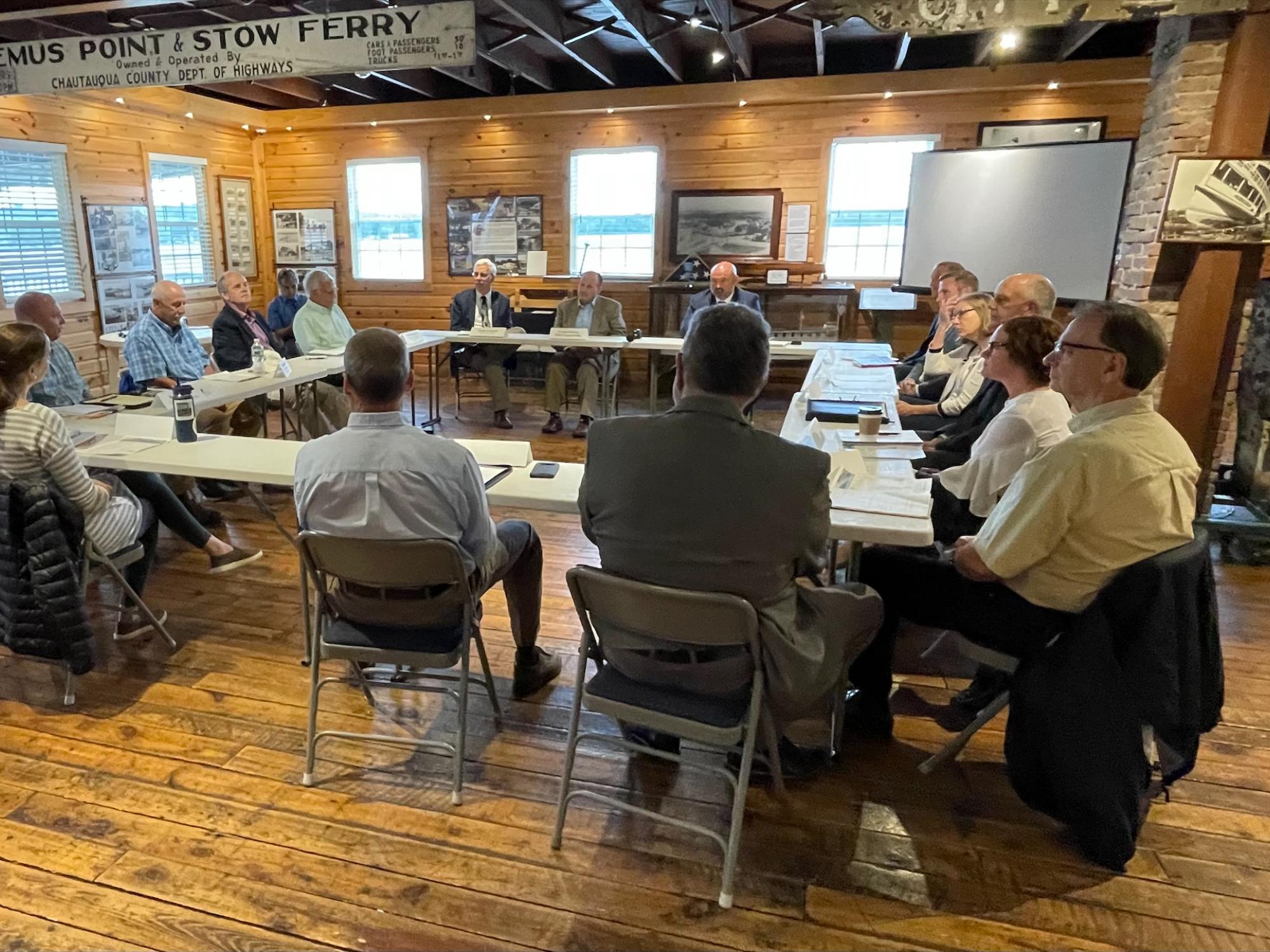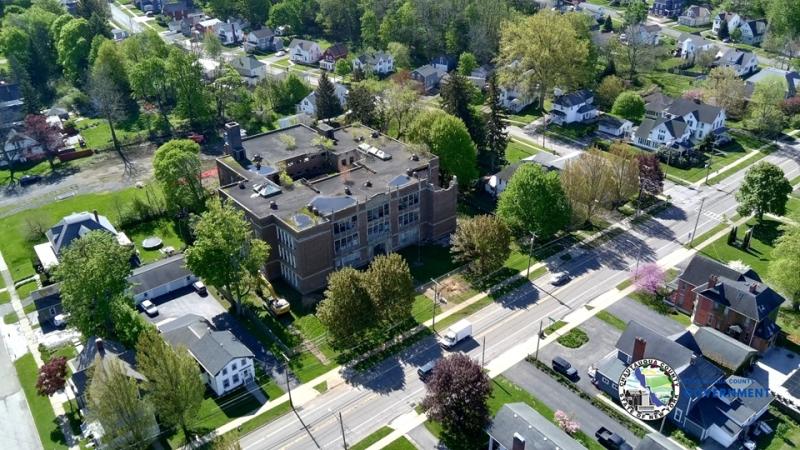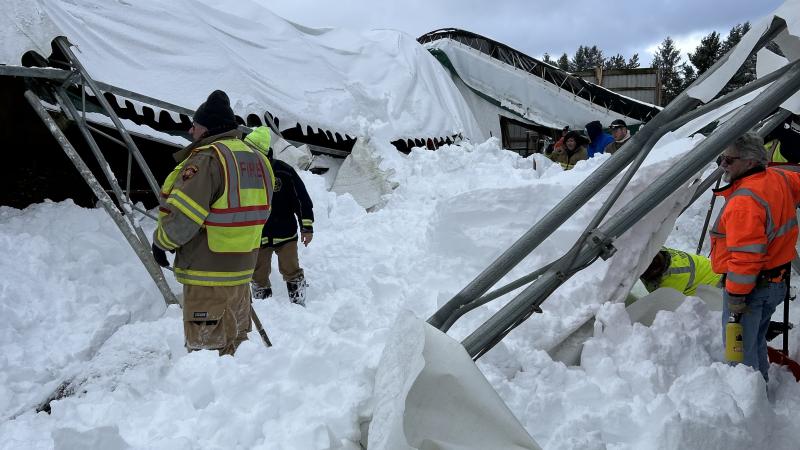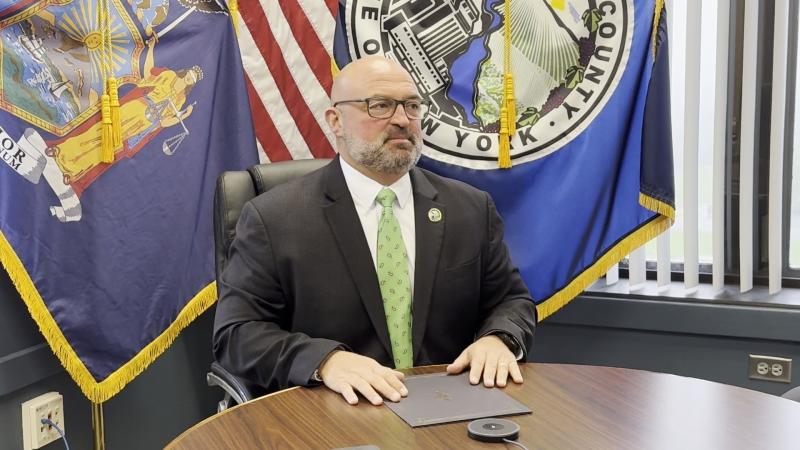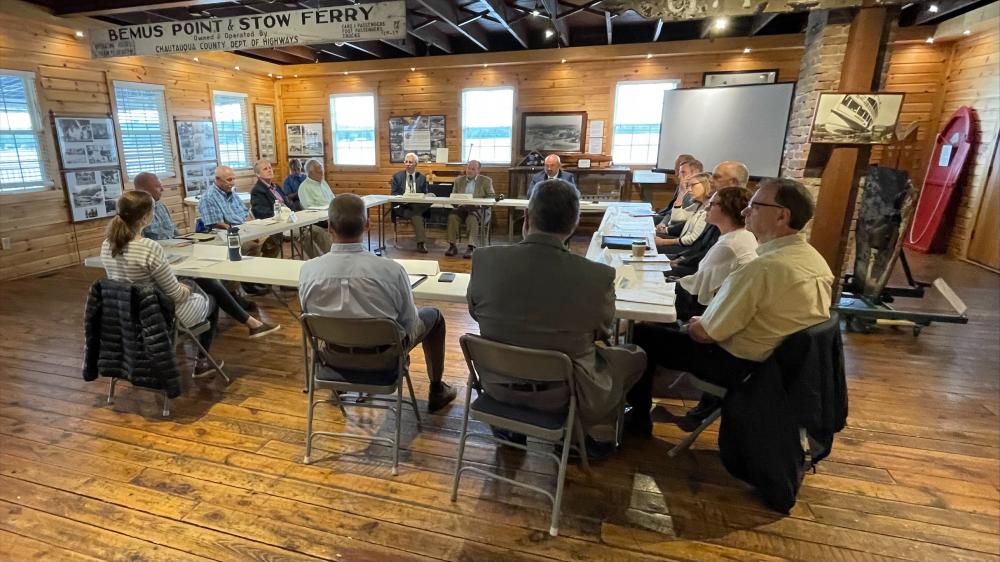
(Image by Justin Gould / Media Information Officer)
BEMUS POINT, NY – Congressman Nick Langworthy and Chautauqua County Executive PJ Wendel have partnered to encourage collaboratory efforts on Chautauqua Lake, bringing together stakeholders during a roundtable discussion on Wednesday.
Chautauqua Lake is considered by many as one our area’s greatest natural gems. In addition to its environmental significance, the lake is a major economic driver for our county with over 66 percent of visitors to Chautauqua County utilizing a lake or waterway and 47 percent of sales tax generated is credited to municipalities immediately surrounding Chautauqua Lake itself.
Specifically, $282 million dollars is spent annually by tourists in the county, with associated state and local taxes generating $36 million dollars for our communities.
From an ecological standpoint, the lake is classified by the New York State Department of Environmental Conservation as a “Class A Waterbody” and suitable for drinking water; however the lake also is listed as an “Impaired Lake” because its usability is impacted negatively by nuisance vegetation, including weeds and harmful algal blooms (HABs).
"This Congressional Roundtable was important to me because it allowed me to hear directly from the officials and community leaders who are so dedicated to the health and future of Chautauqua Lake,” said Congressman Nick Langworthy. “County Executive PJ Wendel and chairman of the legislature Pierre Chagnon have been tireless advocates for this Lake, and I'm glad to see so much willingness to collaborate.”
The Chautauqua Lake Watershed and Management Alliance is a not-for profit group composed of lake organizations, conservation groups and municipalities that work in collaboration to allocate funding for various lake maintenance activities.
These activities begin with early and late season aquatic vegetation surveys that determine what species are present and where those species are likely to impact the usability of the 3,000-acre lake. The data from those surveys are then used to shape lake management activities like weed harvesting and herbicide applications. Additional activities include shoreline cleanup around the 42-mile perimeter of the lake and detection and eradication of invasive species threats.
“I believe in order to best maintain our lake we have to work together utilizing all tools on our tool belt,” explained Chautauqua County Executive PJ Wendel. “I’m proud to say Chautauqua County is working to unite all stakeholder groups involved with our lake. With a unity of effort of all stakeholders we will continue to evolve our lake management policies and maintain this beautiful gem.”
Over time, a variety of efforts to best manage the lake have taken place. Currently, and in the near future, several “game changing” initiatives to build upon our past and current efforts are at the forefront including: The Jefferson Project.
The new initiative is bringing world-class science from IBM and Rensselaer Polytechnic Institute to Chautauqua Lake and is helping our county understand systems and processes that cause HABs.
“We are working on developing solutions because, without action, the harmful algae blooms threaten tourism, wildlife, and our local economy,” continued Congressman Langworthy. “I’m dedicated to working with local leaders to safeguard this cherished lake for future generations.”
This year, $3.2 million dollars will be invested in the lake, of which $1.7 million is for watershed projects, $1.3 million for in-lake projects and $0.25 million for lake monitoring efforts. In addition to funding from the 2% Occupancy Tax for Lakes & Waterways, the Chautauqua Lake Watershed Management Alliance works with its various partners to secure grant funding to help further environmental efforts. In 2024, we intend to increase funding for in-lake projects through reallocation of the 2% Occupancy Tax program.
Among new funding resources on the horizon include the federally funded Aquatic Ecosystem Restoration (AER) project by the U.S. Army Corps of Engineers for Chautauqua Lake.
Congressman Langworthy, and others, are advocating for a Congressional “Earmark” to fund an initial phase. If the study moves forward, the Army Corps will assess problematic conditions in the watershed and lake, make recommendations to restore the ecosystem and open the door to federal implementation funding.
Furthermore, it is anticipated that the federal AER project, and the Jefferson Project, will collaborate in a synergistic way to identify and implement projects that will provide long-term improvements to Chautauqua Lake.
“Just like in nature, I feel our strategy is ever evolving and Chautauqua County is currently seeking additional funding sources to further environmental efforts,” concluded Wendel. “If you missed our recent Chautauqua Lake public meeting, visit chqgov.com/CHQLake to view the county’s presentation and submit your comments to CHQLake@chqgov.com. Community feedback is a vital part of our planning process.”
While a Chautauqua Lake Memorandum of Understanding, which was enacted in 2021 to bring all partners together in good faith achieving the common goal of an ecologically and economically healthy Chautauqua Lake, remains in place through 2024, a renewed push continues by Congressman Langworthy and County Executive Wendel to further all efforts in a collaboratory manor that best benefits one of our county’s most important natural resources.

